Resources
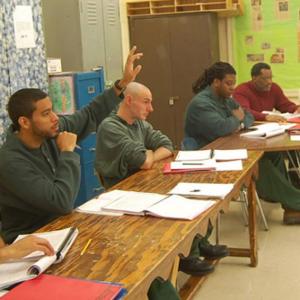
Journal Issue. Full text is available online.
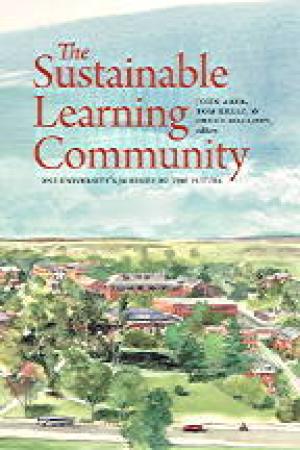
University communities have the potential to serve as models in the development and application of sustainability principles and practices, not only by what they teach and study, but also by how they operate facilities and engage with off-campus partners. With the oldest endowed campus-wide sustainability program in the country, established in 1997, the University of New Hampshire has become a leader in advancing a campus culture of sustainability. The UNH experience provides a unique window into the development of a new and integrated approach to teaching, learning, research, and operations. It is also a valuable guide for other institutions that aim to enhance the quality of campus life while reducing their environmental footprint. The book’s organization along four functional domains (curriculum, operations, research, and engagement) allows faculty, staff, students, and managers to focus on sections of particular relevance to their university roles. Each chapter develops standards of best practices and presents interesting case studies to humanize the larger effort. (From the Publisher)
From its beginnings, Georgetown College welcomed students of all faiths. Today, that imperative finds roots in the Vatican II document Nostra Aetate and serves the good of interreligious dialogue in a globalized world. Georgetown describes its posture as “centered pluralism,” remaining in the Catholic tradition while engaging in conversation with others. An ongoing challenge is how to remain centered in Catholic tradition and at the same time be truly open to encounter with the religious other. (From the Publisher)
A special section of "Teaching Theology and Religion" that collects short essays providing snapshots of how religion is taught in the undergraduate (college/university) curriculum in 9 countries around the world: Denmark, Ireland, Turkey, Botswana, Japan, Malaysia, Japan, New Zealand, and Brazil.

Click Here for Book Review Abstract: Pietism has long been ignored in evangelical scholarship. This is especially the case in the field of Christian higher education, which is dominated by thinkers in the Reformed tradition and complicated by the association of Pietism with anti-intellectualism. The irony is that Pietism from the beginning "was intimately bound up with education," according to Diarmaid MacCulloch. But until now there has not been a single work dedicated to exploring a distinctively Pietist vision for higher education. In this groundbreaking volume edited by Christopher Gehrz, scholars associated with the Pietist tradition reflect on the Pietist approach to education. Key themes include holistic formation, humility and openmindedness, the love of neighbor, concern for the common good and spiritual maturity. Pietism sees the Christian college as a place that forms whole and holy persons. In a pluralistic and polarized society, such a vision is needed now more than ever. (From the Publisher)
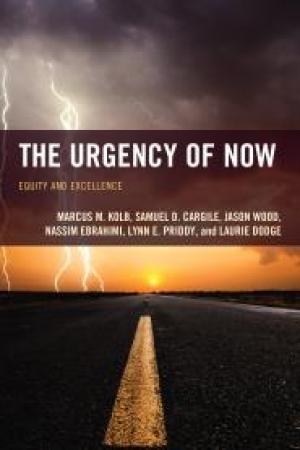
Click Here for Book Review Abstract: With the student body evolving quickly, and the looming challenge of the “completion agenda,” community colleges are facing circumstances like never before in serving all students and propelling them to fulfilling their education aspirations. The Urgency of Now suggests a way forward, with students and their learning at the center of what community colleges, and all of higher education, must do to generate graduates in possession of high quality degrees and credentials. Through considering comprehensive assessment, new roles for accreditation, faculty engagement strategies, and competency-based education, The Urgency of Now describes our current challenges and the ways we might meet those challenges for the 21st century institution. (From the Publisher)
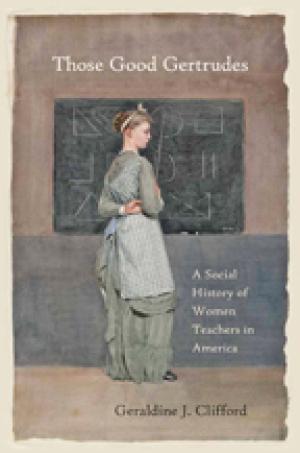
Those Good Gertrudes explores the professional, civic, and personal roles of women teachers. Its voice, themes, and findings build from the mostly unpublished writings of many women and their families, colleagues, and pupils. Geraldine J. Clifford studied personal history manuscripts in archives and consulted printed autobiographies, diaries, correspondence, oral histories, interviews—even film and fiction—to probe the multifaceted imagery that has surrounded teaching. This work stands alone: it is broad ranging, inclusive, and comparative. It surveys a long past where schoolteaching was essentially men's work, with women relegated to restricted niches such as teaching rudiments of the vernacular language to young children and socializing girls for traditional gender roles. Clifford documents and explains the emergence of women as the prototypical schoolteachers in the United States, a process apparent in the late colonial period and continuing through the nineteenth century, when they became the majority of American public and private schoolteachers. She finds that this trend continues in the twenty-first century, despite the diversion of women to competing professions, a precipitous reduction in the number of Roman Catholic nuns, and repeated efforts and incentives to recruit and retain male teachers. Cross-national comparisons suggest that America's early reliance on women teachers quickened and extended the reach of schools across the nation’s social classes, religious and ethnic groupings, and cultural and physical landscapes. The capstone of Clifford’s distinguished career, Those Good Gertrudes will engage scholars in the history of education and women’s history, teachers past, present, and future, and readers with vivid memories of their own teachers. The first woman to receive a Guggenheim Fellowship for research in education, Geraldine J. Clifford is professor emerita at the University of California, Berkeley. Her previous books include Ed School: A Brief for Professional Education. (From the Publisher)
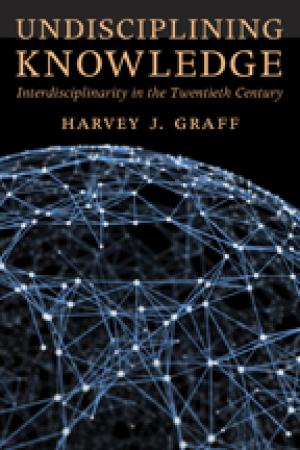
Interdisciplinarity—or the interrelationships among distinct fields, disciplines, or branches of knowledge in pursuit of new answers to pressing problems—is one of the most contested topics in higher education today. Some see it as a way to break down the silos of academic departments and foster creative interchange, while others view it as a destructive force that will diminish academic quality and destroy the university as we know it. In Undisciplining Knowledge, acclaimed scholar Harvey J. Graff presents readers with the first comparative and critical history of interdisciplinary initiatives in the modern university. Arranged chronologically, the book tells the engaging story of how various academic fields both embraced and fought off efforts to share knowledge with other scholars. It is a story of myths, exaggerations, and misunderstandings, on all sides. Touching on a wide variety of disciplines—including genetic biology, sociology, the humanities, communications, social relations, operations research, cognitive science, materials science, nanotechnology, cultural studies, literary studies, and biosciences—the book examines the ideals, theories, and practices of interdisciplinarity through comparative case studies. Graff interweaves this narrative with a social, institutional, and intellectual history of interdisciplinary efforts over the 140 years of the modern university, focusing on both its implementation and evolution while exploring substantial differences in definitions, goals, institutional locations, and modes of organization across different areas of focus. Scholars across the disciplines, specialists in higher education, administrators, and interested readers will find the book’s multiple perspectives and practical advice on building and operating—and avoiding fallacies and errors—in interdisciplinary research and education invaluable. (From the Publisher)

Click Here for Book Review Abstract: Missoula, Montana, is a typical college town, with a highly regarded state university, bucolic surroundings, a lively social scene, and an excellent football team - the Grizzlies - with a rabid fan base.   The Department of Justice investigated 350 sexual assaults reported to the Missoula police between January 2008 and May 2012. Few of these assaults were properly handled by either the university or local authorities. In this, Missoula is also typical.   A DOJ report released in December of 2014 estimates 110,000 women between the ages of eighteen and twenty-four are raped each year. Krakauer’s devastating narrative of what happened in Missoula makes clear why rape is so prevalent on American campuses, and why rape victims are so reluctant to report assault.   Acquaintance rape is a crime like no other. Unlike burglary or embezzlement or any other felony, the victim often comes under more suspicion than the alleged perpetrator. This is especially true if the victim is sexually active; if she had been drinking prior to the assault — and if the man she accuses plays on a popular sports team. The vanishingly small but highly publicized incidents of false accusations are often used to dismiss her claims in the press. If the case goes to trial, the woman’s entire personal life becomes fair game for defense attorneys.   This brutal reality goes a long way towards explaining why acquaintance rape is the most underreported crime in America. In addition to physical trauma, its victims often suffer devastating psychological damage that leads to feelings of shame, emotional paralysis and stigmatization. PTSD rates for rape victims are estimated to be 50%, higher than soldiers returning from war.   In Missoula, Krakauer chronicles the searing experiences of several women in Missoula — the nights when they were raped; their fear and self-doubt in the aftermath; the way they were treated by the police, prosecutors, defense attorneys; the public vilification and private anguish; their bravery in pushing forward and what it cost them.   Some of them went to the police. Some declined to go to the police, or to press charges, but sought redress from the university, which has its own, non-criminal judicial process when a student is accused of rape. In two cases the police agreed to press charges and the district attorney agreed to prosecute. One case led to a conviction; one to an acquittal. Those women courageous enough to press charges or to speak publicly about their experiences were attacked in the media, on Grizzly football fan sites, and/or to their faces. The university expelled three of the accused rapists, but one was reinstated by state officials in a secret proceeding. One district attorney testified for an alleged rapist at his university hearing. She later left the prosecutor’s office and successfully defended the Grizzlies’ star quarterback in his rape trial. The horror of being raped, in each woman’s case, was magnified by the mechanics of the justice system and the reaction of the community.   Krakauer’s dispassionate, carefully documented account of what these women endured cuts through the abstract ideological debate about campus rape. College-age women are not raped because they are promiscuous, or drunk, or send mixed signals, or feel guilty about casual sex, or seek attention. They are the victims of a terrible crime and deserving of compassion from society and fairness from a justice system that is clearly broken. (From the Publisher)